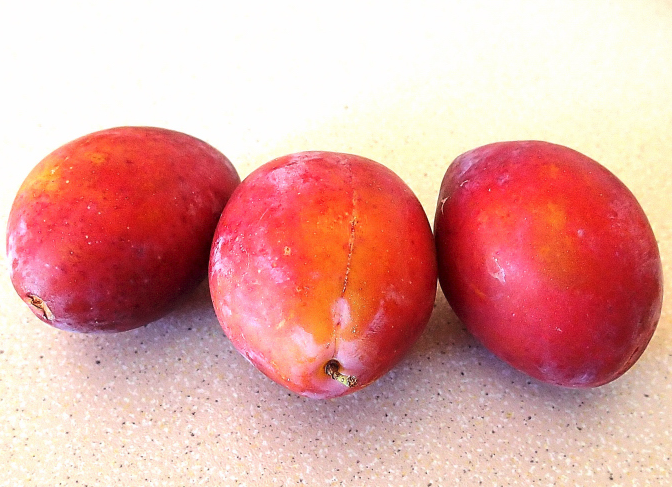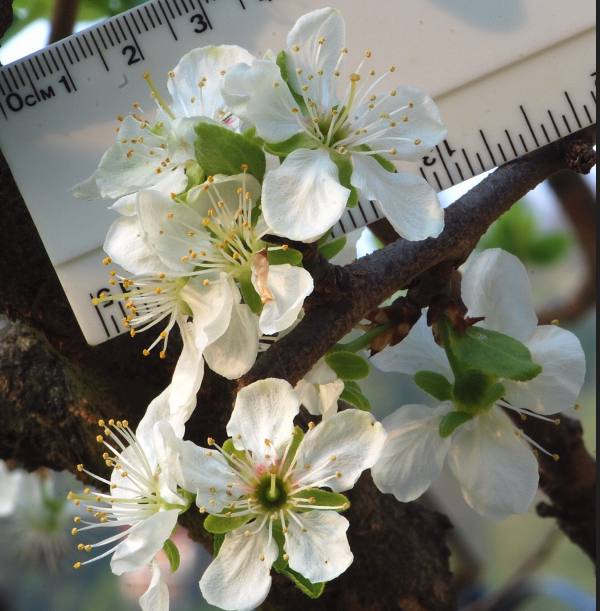| "Descrizione" by AColumn (9336 pt) | 2022-Dec-06 19:36 |
Review Consensus: 10 Rating: 10 Number of users: 1
| Evaluation | N. Experts | Evaluation | N. Experts |
|---|---|---|---|
| 1 | 6 | ||
| 2 | 7 | ||
| 3 | 8 | ||
| 4 | 9 | ||
| 5 | 10 |
Prunus domestica L. (Plum) has an ancient tradition of cultivation dating from 2,000 to 4,000 years and is present in temperate climate regions around the world with many species.

It belongs to the Rosaceae family.
- Asian species: Prunus salicina Lindl., Prunus simonii Carr.
- European species: Prunus domestica L., Prunus cerasifera Ehrh., Prunus insititia L., Prunus spinosa L., Prunus armeniaca L.
- American species: Prunus americana Marsh., Prunus hortulana Bailey, Prunus cerasifera Ehrh., Prunus subcordata Benth, Prunus maritima Marsh., Prunus munsoniana Wight & Hedr.
Plum contains anthocyanins, flavonoids, polyphenols, chlorogenic acid, neoclorogenic acid, caffeic acid, rutin, all natural components very interesting from the health point of view and some with a strong antioxidant and neuroprotective activity. However, it contains many sugars.(1).
The anabolic activity of the bones decreases in old age. Contrast therapies are rather limited and the only effective proanabolic regimen currently available to restore bone is intermittent treatment with teriparatide (parathyroid hormone 1-34). A diet containing dried plums can definitely help to increase and recover the aged bone volume (2).

The quantity and type of polyphenols, and the synergistic action of other components such as sorbitol, quinic acid, chlorogenic acid, vitamin K, boron, copper and potassium, contained in a plum extract, as well as having properties of bone preservation, have been shown to protect muscles and exert an anti-tumor activity on colon cancer (3).
The leaves of the plum, in the form of essential oil obtained by hydrodistillation, have demonstrated an interesting activity of contrast to free radicals exerting an antioxidant and neuroprotective action (4).
A four-week diet that included 20% dried plums was able, in an animal model, to alleviate the symptoms of inflammatory arthritis by virtue of its polyphenolic content (5).
The most relevant studies on this ingredient have been selected with a summary of their contents:
References________________________________________________________________________
(1) Polyphenol-Enriched Plum Extract Enhances Myotubule Formation and Anabolism while Attenuating Colon Cancer-induced Cellular Damage in C2C12 Cells. Alsolmei FA, Li H, Pereira SL, Krishnan P, Johns PW, Siddiqui RA. Nutrients. 2019 May 15;11(5). pii: E1077. doi: 10.3390/nu11051077.
(2) Dietary dried plum increases bone mass in adult and aged male mice. Halloran BP, Wronski TJ, VonHerzen DC, Chu V, Xia X, Pingel JE, Williams AA, Smith BJ. J Nutr. 2010 Oct;140(10):1781-7. doi: 10.3945/jn.110.124198.
(3) Polyphenol-Enriched Plum Extract Enhances Myotubule Formation and Anabolism while Attenuating Colon Cancer-induced Cellular Damage in C2C12 Cells. Alsolmei FA, Li H, Pereira SL, Krishnan P, Johns PW, Siddiqui RA. Nutrients. 2019 May 15;11(5). pii: E1077. doi: 10.3390/nu11051077.
(4) Potential Application of Prunus armeniaca L. and P. domestica L. Leaf Essential Oils as Antioxidant and of Cholinesterases Inhibitors. Bonesi M, Tenuta MC, Loizzo MR, Sicari V, Tundis R. Antioxidants (Basel). 2018 Dec 21;8(1). pii: E2. doi: 10.3390/antiox8010002.
(5) Dried plum alleviates symptoms of inflammatory arthritis in TNF transgenic mice. Mirza F, Lorenzo J, Drissi H, Lee FY, Soung DY. J Nutr Biochem. 2018 Feb;52:54-61. doi: 10.1016/j.jnutbio.2017.10.002.
| Evaluate |

